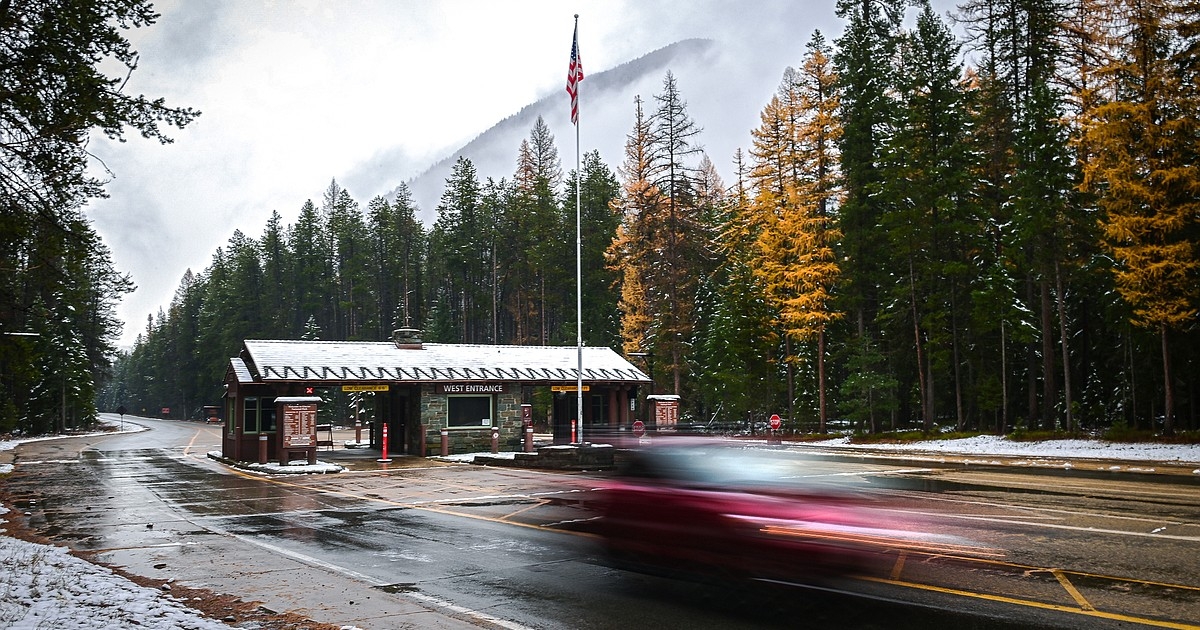Description
When Sarah Tidwell learned she was losing her job with the U.S. Forest Service, her first reaction was grief. Her second was confusion.
“I was distressed immediately,” recalled Tidwell. “I worked so hard all summer and was so committed to the Forest Service.”
Dismay quickly gave way to bafflement. More than a month later, Tidwell still isn’t sure why she was fired or if the decision was legal. The termination letter stated her release from the Forest Service was “based on the efficiency of the government and is not for performance or conduct."
“Efficiency,” Tidwell said as she reread the statement in late October. “What does that even mean? Is my job not efficient?”
Tidwell finds that hard to believe. If anything, she helped keep the forest operational during a time when budgets and staff were stretched to the max. The past six months, Tidwell spent most days hopping between departments, helping whoever needed an extra pair of hands the most.
Some days that meant conducting lifejacket checks for the river crew. Other times it meant patrolling campsites and roads with the forest protection officer. It almost never meant doing her actual job, clearing and maintaining trails in the backcountry. There were simply too many other, more essential things to do and too few people to do them.
That sort of improvisational labor has become a staple in many areas as a year of budget cuts, mass terminations and one of the longest government shutdowns in U.S. history leaves public land agencies scrambling.
Between Sept. 30, 2024 and March 30, 2025, federal land agencies in Montana lost more than 25% of their staff, according to data collected by the Office of Personnel Management. Some took deferred resignation or early retirement plans. Others were terminated from their positions at the behest of the Department of Government Efficiency. It is unclear how many more workers may have left the federal service in subsequent months.
In Flathead National Forest, the exodus left the recreational department understaffed and overworked during the busy summer season.
“It was one of the more exhausting seasons I’ve have in terms of being able to take care of yourself,” said one wilderness ranger, who asked to remain anonymous due to fears of retribution.
Working with a bare-bones crew, the ranger described feeling as though they were constantly treading water, struggling to keep their head above the waves. Despite their best efforts, they said “thousands upon thousands” of miles of backcountry trails they were charged with maintaining went unchecked. Some trailheads, including the Jewel Basin, went unstaffed for the first time in years.
“God knows what long-term effects have happened up there,” the ranger said.
Several nonprofits helped fill in the gaps by organizing their own volunteer trail crews. Others manned tables at busy trailheads to provide visitors with trail information and reminders about forest rules. Those efforts helped preserve a semblance of normalcy for many recreationists, said the wilderness ranger.
But they warned that seemingly minor ecological impacts can grow over time, especially if the forest continues to struggle with staffing.
The ranger was already worried about their workload next year. In a typical year, the wilderness ranger said they would spend the fall checking and repairing the crew’s equipment, which ranges from chainsaws to camping gear to AEDs. Then the government shut down, and the wilderness ranger was furloughed before they could start those critical tasks.
“I can’t catch up on that. I can’t catch up on this,” they said. “The following season we might have tools that don’t work.”
Sarah Lundstrom, the Glacier program manager for the National Parks Conservation Association, described similar fissures in Glacier National Park. In April, Interior Secretary Doug Burgum issued an order directing all national parks to remain “open and accessible,” despite the staff shortages many faced.
Lundstrom believes that order, coupled with an influx of seasonal staff members, helped keep appearances up at the Crown of the Continent during the summer.
“A lot of the gaps didn’t show. It was sort of a facade,” said Lundstrom.
Behind the scenes, the park is facing many of the same staffing issues as Flathead National Forest. About 25% of the park’s full-time staff positions have been vacant most of the year, including key positions like chief ranger, chief of interpretation and deputy superintendent. With a federal hiring freeze still firmly in place, there is no clear timeframe for when those positions might be filled.
The Trump administration has promised deeper cuts to the National Park Service, but Lundstrom said that tracking down who, exactly, may be at risk of termination has been difficult. Earlier this year, some 1,600 positions historically housed under the National Park Service were shuffled to other federal departments.
“There’s a lot of shell games happening,” said Lundstrom. “It’s really hard to tell who’s left.”
JOB INSECURITY has spurred an increasing number of federal workers to join unions. The largest federal worker union, the American Federation of Government Employees, reported adding 16,200 new members to its ranks in the first two months of the year alone.
Employees at the Custer-Gallatin National Forest voted to join the National Federation of Federal Employees this summer. The unit had previously been the only national forest in the state without union protections for employees. Recent social media posts suggest employees at Glacier National Park may be following suit.
“We need TEN MORE people to reach our goal of 50% of eligible employees to get the union started,” states an Oct. 12 post to an Instagram account titled “glacierunited.”
The post links to the website of the National Treasury Employees Union, which represents employees from 38 government agencies including the National Park Service.
Bobby Oshaben, a steward for the local chapter of the National Federation of Federal Employees, applauded the recent unionization efforts as an essential step toward protecting the rights of federal workers.
“It really does feel like the administration is throwing mud at the wall and seeing what sticks,” he said. “That’s why our unions are so important. No individual has the resources to fight this.”
In February, Oshaben was one of about 40 probationary workers terminated from Flathead National Forest. Thanks in large part to court cases brought by the National Federation of Federal Employees and other federal unions, Oshaben’s termination was ruled illegal, and he returned to work in March.
To date, federal unions have filed more than two dozen cases against the second Trump administration challenging the legality of various cuts and terminations.
One of the most recent victories for federal unions is a preliminary injunction banning the Trump administration from firing federal workers during the government shutdown. The decision was handed down Nov. 3 by a U.S. District Court judge in California.
Oshaben and Tidwell both confirmed that the union has filed a formal grievance to dispute Tidwell’s termination. The complaint focuses on a discrepancy that may indicate Tidwell was issued the termination letter after her probationary period had ended.
Union representatives have also called for an end to the government shutdown and an assurance that federal workers will receive backpay. On Flathead National Forest, Oshaben said about 75% of staff are working under either an excepted or exempted status. The forest had enough fee dollars reserved to fund staff paychecks through October, but Oshaben said that pot of money was due to run out by Nov. 1.
He worries about the strain the lapse in payment will cause for workers who are already dealing with so many uncertainties, but he also knows that many of his coworkers share a deep-rooted commitment to the lands they steward.
“It’s become federal employees’ responsibility to fight for the agencies we work for,” he said. “We care deeply about public lands and preserving public lands.”
Reporter Hailey Smalley can be reached at 758-4433 or [email protected].
News Source : https://dailyinterlake.com/news/2025/nov/07/shutdown-caps-off-year-of-exhaustion-confusion-for-federal-land-agencies/
Other Related News
11/10/2025
Kalispell City Council will consider ways to accommodate the citys growing fleet of vehic...
11/10/2025
After months of joint pain and declining health Eric Gardners father sought out allergy t...
11/09/2025
The sky was blue the day Patrick Carlson traveled from the Blackfeet Nation to bless the ...
11/09/2025
Flathead County commissioners again dove into the fray surrounding Flathead Lakes summert...
11/09/2025













